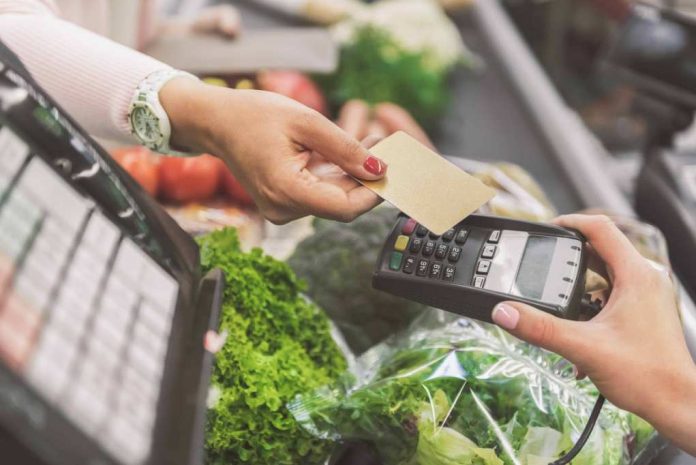
Electronic Benefit Transfer (EBT) cards are a modern solution to an age-old problem: how to ensure that people who need help buying food can get it easily and with dignity. Think of an EBT card like a special debit card. If you’re struggling to put food on the table, this card gives you a helping hand. It belongs to the Supplemental Nutrition Assistance Program (SNAP), a program designed to provide nutritional assistance. The aim is simple – to make sure no one goes hungry because they can’t afford food. Whether it’s a family facing tough times, a senior citizen on a fixed income, or anyone in between, EBT cards are there to lend support. In this article, we’re going to explore how EBT cards work and the difference they make in people’s lives. Let’s get started on understanding the role EBT cards play in feeding families and individuals across our communities.
EBT Cards: Bridging the Nutritional Gap
As stated above EBT cards are part of SNAP formerly known as food stamps. These cards work like debit cards, allowing recipients to purchase eligible food items at authorized grocery stores and farmers markets. The aim is to provide nutritional support to those who might otherwise struggle to afford enough food. Several factors determine eligibility for SNAP, which in turn determines eligibility for an EBT card. These often include:
- Household Income and Size: Your total household income must be below a certain threshold, which varies depending on the number of people in your household.
- Employment Status: Adults without dependents are often required to meet specific work requirements to be eligible.
- Resources: The amount of resources, such as bank accounts or investments, that a household can have and still be eligible for SNAP is also considered.
- Residency and Citizenship Status: Applicants generally need to be residents of the state where they are applying and either U.S. citizens or qualified non-citizens.
- Deductions: Certain expenses like housing costs, childcare, medical expenses (for elderly or disabled members), and others may be deducted from your income to determine your eligibility.
- Special Considerations for Certain Groups: Seniors, disabled individuals, and others may have different criteria or additional benefits available.
The government designs these criteria to ensure that SNAP and EBT cards support those in genuine need of assistance with food expenses. The exact requirements can vary by state, so it’s important to check with your local SNAP office for specific eligibility guidelines.
The Application Process
After figuring out if you’re eligible for EBT cards through the SNAP program, the next big step is the application process. This might sound a bit complicated, but don’t worry, it’s quite straightforward once you know what to do. Let’s walk through the process step by step to make sure you have everything covered:
- Determine Eligibility: First off, make sure you fit the SNAP criteria. Check things like how much your household earns and how many people you’re supporting.
- Gather Necessary Documents: Round up all the paperwork you’ll need. This usually means things like your pay stubs, bills, ID, and social security numbers for everyone in your household.
- Complete the Application: You can apply for SNAP online, by mail, or in person. Online is usually quicker, but choose whatever works best for you.
- Submit the Application: After you fill out all the details, send it off to your state’s SNAP office. Don’t forget to include all your documents to avoid any hold-ups.
- Interview: You might have to do an interview, either over the phone or face-to-face, just to go over your application and clarify anything that’s not clear.
- Wait for Approval: Hang tight while your application is being processed. It can take up to about 30 days, depending on where you live.
- Receive Your EBT Card: If everything goes well and you’re approved, you’ll get your EBT card in the mail. This card will have your SNAP benefits on it, ready to use.
- Maintain Eligibility: Remember, you’ll need to keep the SNAP office updated with any big changes, like a new job or a change in income, to keep getting your benefits.
What to Expect When Receiving Benefits
After getting a handle on the application process for SNAP, the next big question is usually about the benefits. How much can you actually get on your EBT card each month? Well, it mostly depends on how many people are in your household. Let’s break down the typical benefit amounts for different household sizes as of 2024:
- 1 Person: $291 monthly.
- 2 People: $535 per month.
- 3 People: $766 each month.
- 4 People: $973 monthly.
- 5 People: $1,155 per month.
- 6 People: $1,386 each month.
- 7 People: $1,532 monthly.
- 8 People: $1,751 per month.
- Extra Persons: Add $219 for each additional person.
These numbers are just a starting point to give you an idea of what you might get from SNAP. Keep in mind, the exact amount can change based on how much money you make and your bills. Also, if you’re really in a tight spot with hardly any cash and need help fast, SNAP can sometimes get you benefits super quick, like within 7 days of applying. This is to make sure you can get food right away if you’re really in need.
Bottom Line
Electronic Benefit Transfer (EBT) cards, as part of the SNAP program, provide essential support to those who have trouble affording food. These cards work like debit cards but are used to buy food. Understanding the eligibility criteria based on household income, size, employment status, and other factors is the first step towards receiving this aid. The application process is designed to be accessible and straightforward, ensuring that help is available to those who need it most. With benefit amounts varying based on household size, EBT cards play a vital role in bridging the nutritional gap and supporting the well-being of communities across the country. Ultimately, these cards are more than just a means to purchase food; they represent a commitment to ensuring that no one has to go hungry.




























